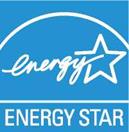Much of the water used in a bathroom is heated. Wasting water would also be wasting the energy used to heat the water. Conserving and reducing the energy used to heat water are part of a sustainable home.
Insulating hot water pipes reduces standby heat loss. Putting a secondary water heater in or near the bathroom minimizes the water that is wasted waiting for the hot water to reach the bathroom and well as the energy lost when the hot water cools in the pipes after hot water is no longer drawn by a bathroom fixture. Installing a tankless or on-demand water heater in the home adds the additional savings in energy that is no longer used to maintain a storage tank of hot water.
In this book, installing, locating, and selecting water heaters are discussed in chapter 2, "Infrastructure Considerations," and chapter 7, "Mechanical Planning." It is also important to select a water heater that is energy efficient and sized to household needs. A too-large water heater will use extra energy and provide more hot water than is required. There are several technologies and water heater designs that offer particular advantages in energy efficiency. These technologies include high-efficiency gas, tankless (on-demand), heat pump, condensing, and solar.
 |
If a design project will include the need to specify a new water heater, or will include water features that increase the use of hot water, you should encourage your client to consider an energy-efficient water heater. For example, an Energy Star-rated water heater would be a good choice. In addition, some local codes may specify the type or efficiency of a new water heater for remodeling, replacement, or new construction.
|
|
|
|
|
|
|




